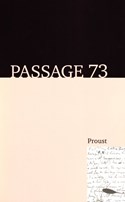Om jalousitemaet hos Proust
DOI:
https://doi.org/10.7146/pas.v30i73.21626Nøgleord:
Proust, jalousiResumé
Per Buvik: “On the Theme of Jealousy in Proust”In Proust, there is generally no love without jealousy. More surprisingly, jealousy is even prior to love, which is, then, derived from jealousy. Love is consequently dominated by uncertainty, suspiciousness, and anguish, represented as rooted in early childhood. Suffering from a never surmounted Oedipus complex, Proust’s narrator and main character constantly compares his girlfriend Albertine with his mother when he was a child, longing for the same intimacy, but also fearing the same “treachery” that he experienced with her. Only long-lasting separation or boredom due to long-lasting daily life together can eliminate jealousy. The problem is that love also disappears when there is no jealousy.
Downloads
Publiceret
2015-08-02
Citation/Eksport
Buvik, P. (2015). Om jalousitemaet hos Proust. Passage - Tidsskrift for Litteratur Og Kritik, 30(73). https://doi.org/10.7146/pas.v30i73.21626
Nummer
Sektion
Artikler
Licens
Forfattere, der publicerer deres værker via dette tidsskrift, accepterer følgende vilkår:
- Forfattere bevarer deres ophavsret og giver tidsskriftet ret til første publicering, samtidigt med at værket efter publiceringen er omfattet af en Creative Commons Attribution-licens, der giver andre ret til at dele værket med en anerkendelse af værkets forfatter og første publicering i nærværende tidsskrift.
- Forfattere kan indgå flere separate kontraktlige aftaler om ikke-eksklusiv distribution af tidsskriftets publicerede version af værket (f.eks. sende det til et institutionslager eller udgive det i en bog), med en anerkendelse af værkets første publicering i nærværende tidsskrift.
- Forfattere har ret til og opfordres til at publicere deres værker online (f.eks. i institutionslagre eller på deres websted) forud for og under manuskriptprocessen, da dette kan føre til produktive udvekslinger, samt tidligere og større citater fra publicerede værker (se The Effect of Open Access).





